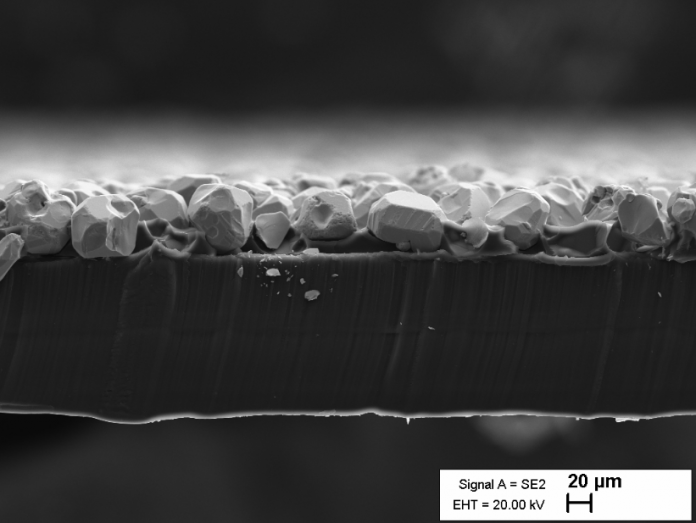Satellites and space exploration have long provided a niche for certain solar technologies, most often those which are highly efficient but otherwise too expensive for more run-of-the-mill applications – the James Webb space telescope launched on Dec. 25, 2021, is already generating power from its 2kW deployable solar array.
Further into the future, solar will continue to be a key technology in powering long-term space missions and even the establishment of a human presence on the Moon, Mars or even further afield. Such missions might seem fanciful or even unnecessary today, but finding useful materials for them is the task given to a group of scientists at the European Space Agency (ESA)’s materials and processes team.
This group, working with Tallinn University of Technology in Estonia (TalTech), is investigating a tiny iron pyrite crystal as a new solar cell material. The chief reason for their interest in this material, rather than its efficiency or potential cost effectiveness, is its availability in raw material form both on the Moon and on Mars. “We’re looking at these microcrystals in the context of future lunar settlement,” explains ESA advanced manufacturing engineer Advenit Makaya. “Future moon bases will need to ‘live off the land’ in order to be sustainable, and the iron and sulfur needed to produce pyrite could be retrieved from the lunar surface.”
Remote sensing, and explorations as far as back as NASA’s Apollo missions have provided a good idea of what is available on the surfaces of the Moon and Mars. Makaya further noted that the project’s scope is exploring the technical possibilities of lunar settlement and in-site resources and that concerns such as the tradeoff between transporting mining equipment into space rather than finished equipment would be addressed further down the line. ESA launched a call for ideas related to the project, and accepted a proposal from TalTech to investigate the iron pyrite solar cell material.
“Our aim is to develop technology for pyrite microcrystal growth and to use them in a monograin layer solar cell, where each tiny crystal would work as an individual solar cell,” explained TalTech scientist Taavi Raadik. “The amount of power generated by one miniscule solar cell is small but in the normal-sized module there would be billions of them – and in principle there is no limitation in terms of their size and shape. Additionally, we have the goal that all necessary source materials should be possible to harvest on the moon in-situ.”

Initially, the project will focus on characterizing the crystalline cell material and evaluating its potential for stable operation in space.
Image: Ants Vill
The material has so far only been associated with very low solar cell efficiencies and is of little interest in other applications. The researchers on this project note, however, that a lunar base would have few space constraints for a solar installation, and that the lunar south pole has already been identified as a region where solar power would be almost continuously available.
TalTech and ESA will jointly fund a Ph.D. thesis investigating the iron pyrite solar cell material and in particular its suitability for reliable, long-term use in the harsh environments outside of Earth’s atmosphere.
ESA’s project will continue searching for opportunities to investigate possible resource utilization on missions into space. “This is only one of a range of in-situ resource utilization methods that ESA has been researching for the moon or further afield,” said ESA’s Advenit Makaya.






